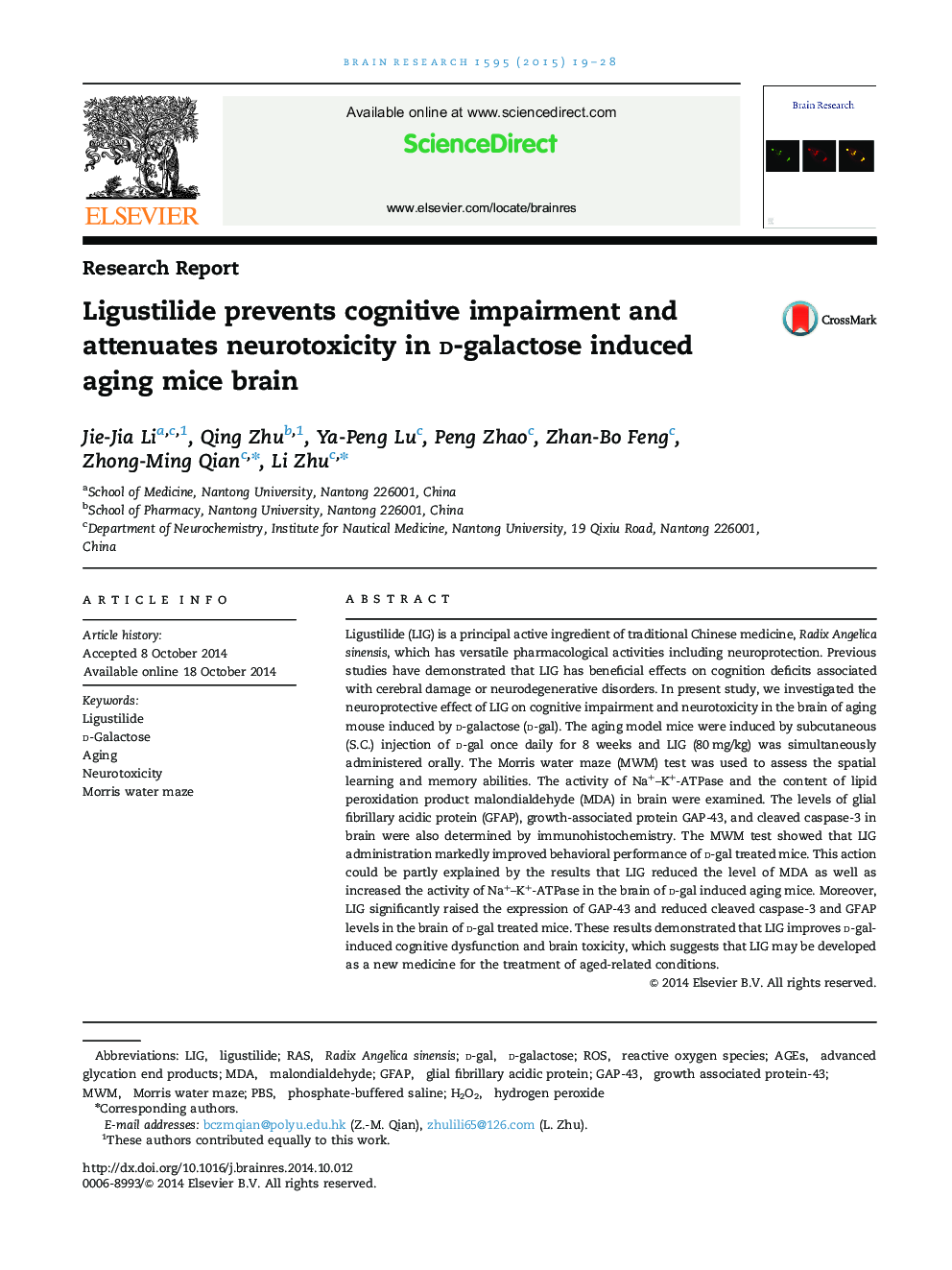| Article ID | Journal | Published Year | Pages | File Type |
|---|---|---|---|---|
| 6263198 | Brain Research | 2015 | 10 Pages |
â¢Ligustilide improved behavioral performance of d-gal treated mice.â¢Ligustilide could attenuate oxidative damage in brain induced by d-gal.â¢Ligustilide raised the expression of GAP-43 in the brain of d-gal treated mice.â¢Ligustilide reversed d-gal induced activation of caspase-3 in mice brain.â¢Ligustilide inhibited astrocytic activation in mice brain induced by d-gal.
Ligustilide (LIG) is a principal active ingredient of traditional Chinese medicine, Radix Angelica sinensis, which has versatile pharmacological activities including neuroprotection. Previous studies have demonstrated that LIG has beneficial effects on cognition deficits associated with cerebral damage or neurodegenerative disorders. In present study, we investigated the neuroprotective effect of LIG on cognitive impairment and neurotoxicity in the brain of aging mouse induced by d-galactose (d-gal). The aging model mice were induced by subcutaneous (S.C.) injection of d-gal once daily for 8 weeks and LIG (80Â mg/kg) was simultaneously administered orally. The Morris water maze (MWM) test was used to assess the spatial learning and memory abilities. The activity of Na+-K+-ATPase and the content of lipid peroxidation product malondialdehyde (MDA) in brain were examined. The levels of glial fibrillary acidic protein (GFAP), growth-associated protein GAP-43, and cleaved caspase-3 in brain were also determined by immunohistochemistry. The MWM test showed that LIG administration markedly improved behavioral performance of d-gal treated mice. This action could be partly explained by the results that LIG reduced the level of MDA as well as increased the activity of Na+-K+-ATPase in the brain of d-gal induced aging mice. Moreover, LIG significantly raised the expression of GAP-43 and reduced cleaved caspase-3 and GFAP levels in the brain of d-gal treated mice. These results demonstrated that LIG improves d-gal-induced cognitive dysfunction and brain toxicity, which suggests that LIG may be developed as a new medicine for the treatment of aged-related conditions.
